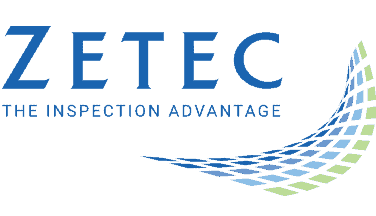Quality Control Testing Methods Using UT and EC

When it comes to quality control metrics in manufacturing, there are a number of valuable measures. Manufacturers must consider the overall yield, the first pass yield, the scrap rate—how much material is being discarded—and the Not Right First Time (NRFT) standard. These metrics allow manufacturers to determine problems within the production process, as well as to measure any resultant waste.
Quality control is especially important during the manufacturing of components, bolt holes, and fasteners—which are often used as part of large structures and machinery. Without accurate quality control testing methods in place, a defective component could potentially make it off the production line and into use—a risk many industries can’t afford. To mitigate these risks, many manufacturers rely on non-destructive testing (NDT).
The Shift From Destructive Testing to NDT
Prior to the widespread use of NDT, destructive testing methods were relied upon but often ended up being misleading, impacting more than a manufacturer’s scrap rate. The main problem with destructive testing—which takes a random sampling of material and inspects it by taking it apart—is that it only provides a snapshot, not a complete picture. One flawless component, bolt hole, or fastener doesn’t mean the whole production run is without flaw, and one flawed bolt hole doesn’t mean the entire process needs to be changed.
Another issue with destructive testing is that even if a part passes inspection, it’s destroyed or changed in some way and no longer fit for use. That’s why non-destructive testing is more efficient.
Using NDT quality control testing methods, technicians can perform surface and subsurface inspection of both metallic and composite materials, receiving an accurate picture for complete analysis.
NDT encompasses different methods for detecting flaws, small and large. For bolt hole and fastener inspection as an example, eddy current array (ECA) testing has been found to be one of the most reliable methods to ensure production quality.
The Role of Eddy Current Array Testing in Quality Control
Eddy current array testing uses electromagnetic fields to detect very small-scale irregularities and discontinuities in metals. This is especially important when testing bolt holes after production since flaws tend to be small and difficult to detect. When eddy current array coils encounter an anomaly, they change their shape and their disturbance is recorded. Technicians then rely on compatible software to visualize the recorded data for analysis.
ECA is a reliable quality control testing method, as it can detect minute surface flaws in bolt holes and fasteners before they’re placed in use. Though, it only works on conductive materials. Nonconductive materials don’t respond to eddy current array coils, creating the need for ultrasonic testing.
The Role of Advanced Ultrasonic Technology in Quality Control
Ultrasonic testing uses high-frequency sound waves generated from specialized probes that scan the volume of the material being tested. The sound waves bounce back and display the results for analysis.
One of the benefits of UT is that it allows technicians to test small and difficult-to-reach areas. Different types of UT scanners can be used for varying applications. Their ease of use can help save time during quality control testing, which is often crucial for meeting production demands.
Efficient Quality Control Testing Methods for Bolt Hole & Fastener Inspection
While potentially small compared to the assets they support, components, bolt holes, and fasteners play an important role in ensuring the integrity of an entire structure. There are many quality control testing methods for component, bolt hole, and fastener inspections but the best solutions improve efficiency and reliability.
Zetec offers a wide range of NDT solutions for component, bolt hole, and fastener inspections to meet your quality control needs. Depending upon your application, eddy current and ultrasonic testing, specifically phased array ultrasonic testing, may be well suited to improve your quality control testing methods. For assistance in selecting the most suitable UT or ECA instruments, contact us today.





